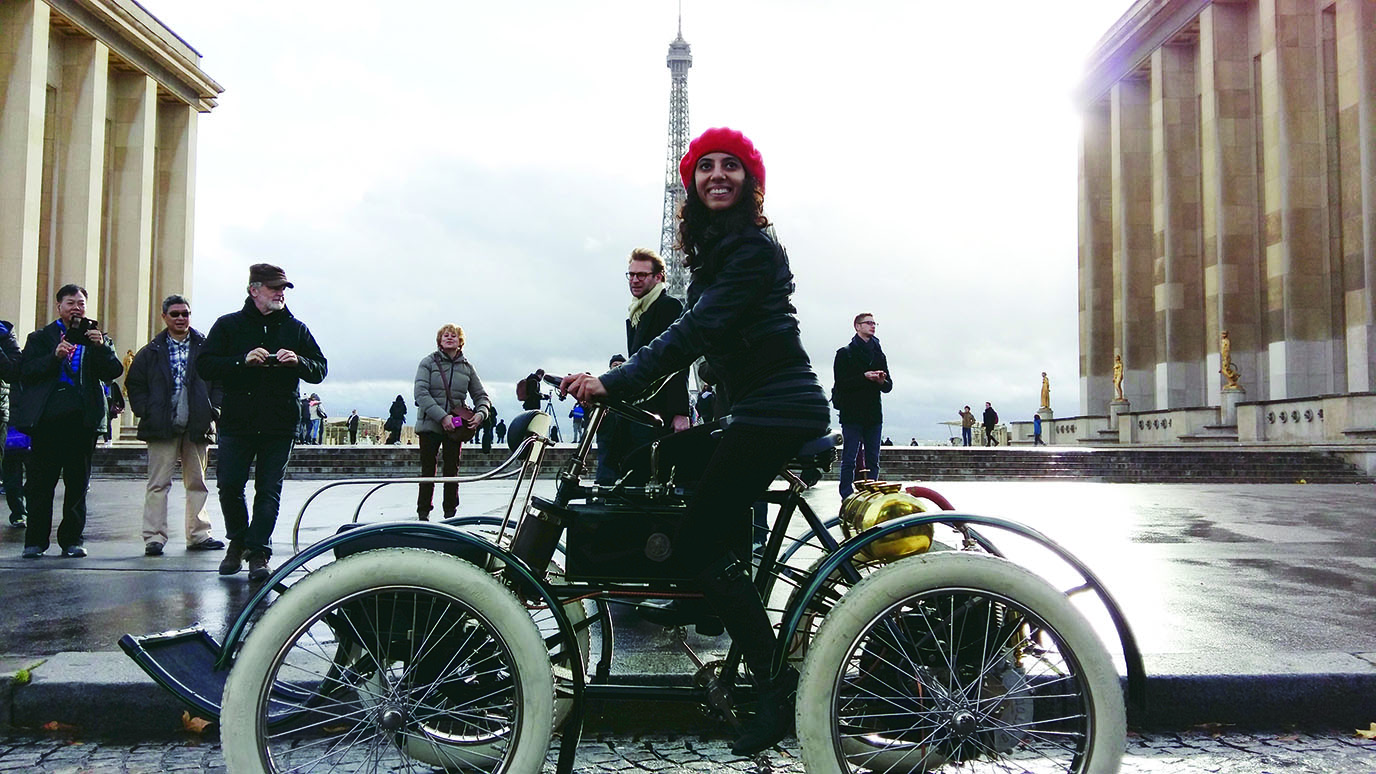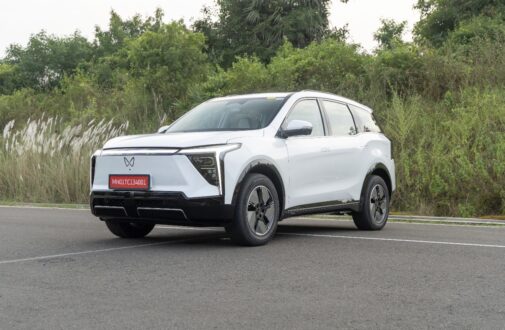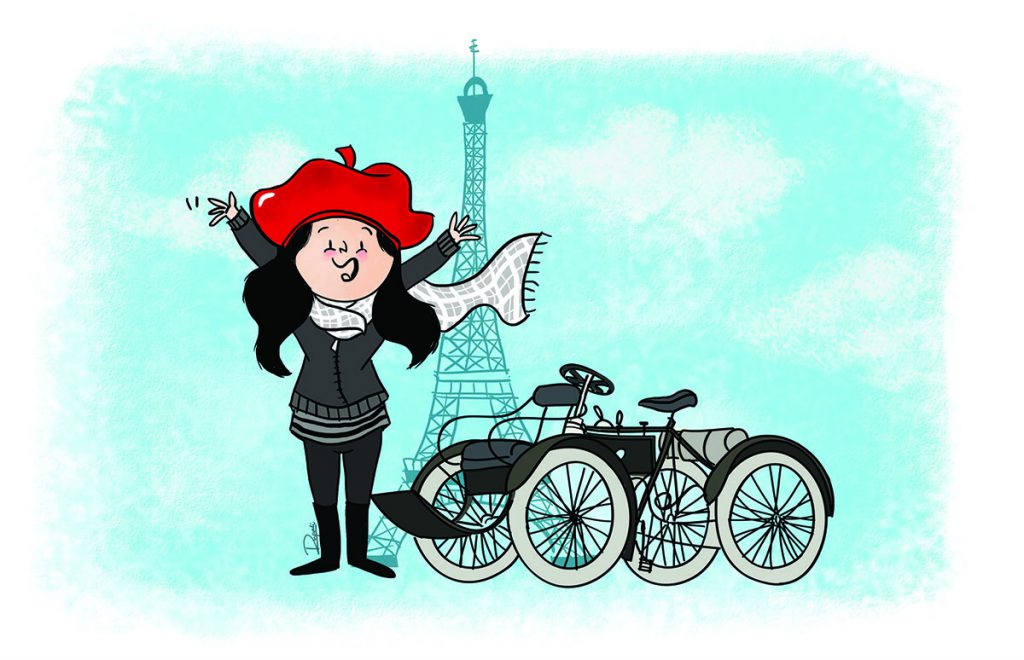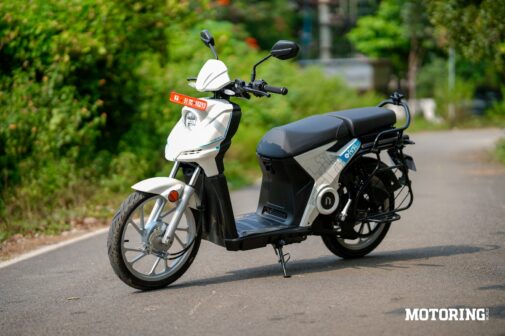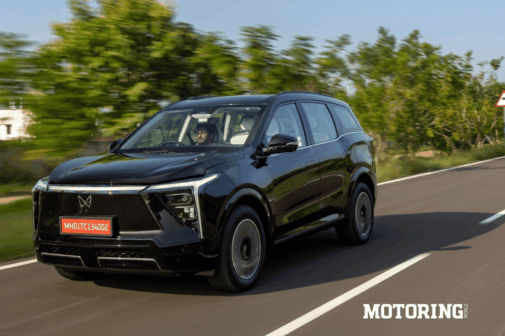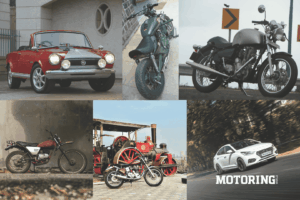It was a dark and cold morning. The day of the Historic Vehicle Tour De Paris had finally arrived. November is known for unpredictable weather in Paris, but I was hoping the rain gods would be kind just for this one Sunday morning. With five layers of clothing, a bright red beret and a truckload of excitement, I was all ready to go. Was I nervous? Yes, indeed, but that little voice inside me was drowned by the divine chugging sound of the quadricycle that I was riding. I’m still not sure which word is appropriate — driving or riding — so I’m going to enjoy mixing it up as I go. Was this the first time I was riding it? Well, obviously not! But previous experience didn’t matter all that much because this was my second time. And my first practice session happened only the day before.
If you haven’t driven a 1900 De Dion Bouton before, allow me to take you through the deceivingly simple functioning of this innocent little machine. First, make sure all your reflexes are functioning properly; any lag in this area is highly detrimental to your safety. If you are a new-age driver who is used to switching on your ignition and watching your car magically move once it’s in gear, you’re in for a surprise. In the De Dion, the process of switching on the vehicle and getting it into motion is a result of a sequence of mini-events involving a series of levers and knobs located above the fuel tank on a rod between the steering wheel and the driver’s seat. Little wonder, then, that after this experience, I now feel like I can fly a plane.
To begin, open the fuel tap, put the vehicle’s ignition timing into retard, move the gear into neutral and switch on the ignition. The next set of steps involves getting it into the optimum motion required to slip it into first gear. The transition into first results in the vehicle gently rising off the ground and plunging forward. While you are in midair, remember to slowly advance it, simultaneously adjusting the throttle to bring about the perfect balance to keep the car running. Most importantly, all of this must be done with a calm and collected look on your face. Once it’s chugging along, you can begin the first round of smiling and waving at onlookers.
A crucial area that must be given a little more importance is the process of getting the De Dion into motion. There are two ways to accomplish this; the conventional way is to pedal away until it’s fast enough. Absolutely fine if you’re riding solo. However, our parameters were somewhat different; the rider/driver (me) was 5’3” and weighed 45 kilos, while the passenger who was sitting in a chair at the front (meant for lightweight princesses) weighed almost double. The lightweight princess in this case is my ever-so-charming mechanic Janos.
Also, to add to the fact that I was an experienced De Dion Bouton driver, having driven close to 150 metres the previous day, I was also highly equipped with waterproof footwear featuring a little invention called heels which made it easy to reach the ground and equally difficult to perform any other task. Keeping all this data in mind, option one of gaining momentum was no longer available to me.
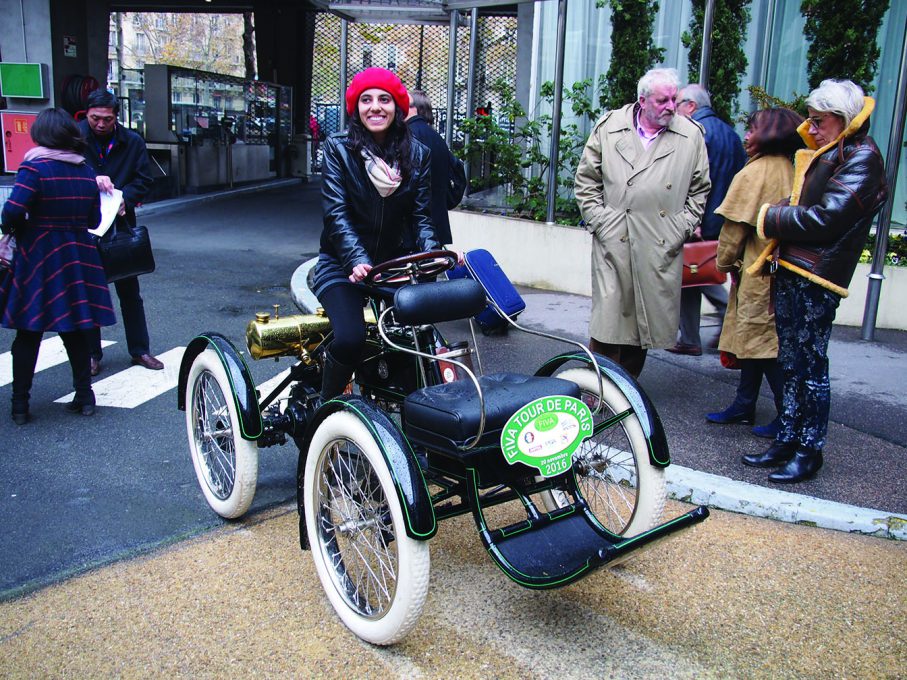
For option two to be put into effect, I got my amazingly supportive passenger to push until I got the engine running, and then prayed that athletics was his forte in school. Once he sprinted forward, jumped and landed softly on the cushioning of the passenger’s seat, I drove him around like royalty until I reached the next traffic light.
The most important instruction of all, though — how does one use the brakes? What’s there to know, right? If you want to stop the vehicle, just slam on the anchoring pedal. Ah, the misconceptions possessed by individuals born post-1900! So here’s how it actually works, if you want to bring the De Dion to a halt, first reduce the revs by retarding it, then bring the lovely tight gear lever (that currently has an over-performing spring) to neutral. Crucial point to note — since the order is first, neutral and second, the chances of you slipping back into gear while trying to bring it to neutral is close to 210 per cent.
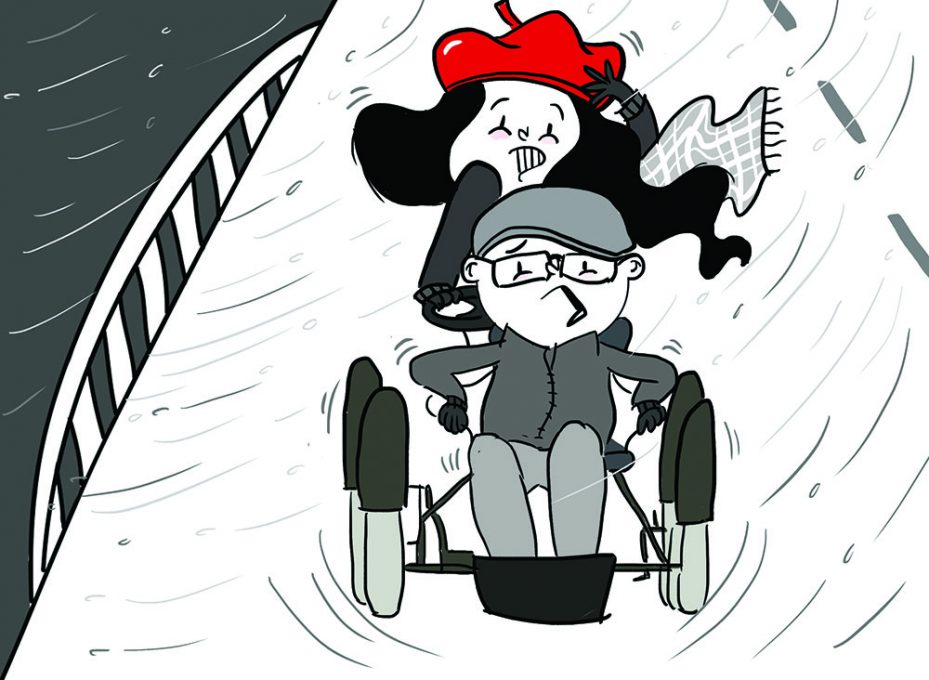
So now that you know how the De Dion functions, let me take you back to the cold, dark morning of the 20th of November, 2016. The messengers who had to tell the rain gods to take a day off were clearly on leave themselves. It was 6:45am and the drizzle had already begun. Our spirits, however, were not dampened, so off we went. The plan was to go in a little convoy from the hotel to the Polo Grounds, a short 15-minute drive with absolutely no traffic. What a breeze! I can’t believe I was worried about this. The convoy started, the cars both ahead and behind me slowly picked up speed. At that point, I realised I didn’t have a conventional accelerator so I couldn’t actually ‘step on it’. I just had to ‘wait on it’ instead.
However, I wasn’t alone and the slopes on the road helped propel me forward at regular intervals. The convoy was led by a large beautiful ochre-coloured Delage and a bright red Itala so we were visible and safe. In addition, the passenger’s seat turned out to be a great vantage point for my navigator, so getting lost was out of the question. But a few minutes into the drive, we weren’t quite sure if we were looking at the Delage or the Itala, a bird or a plane.
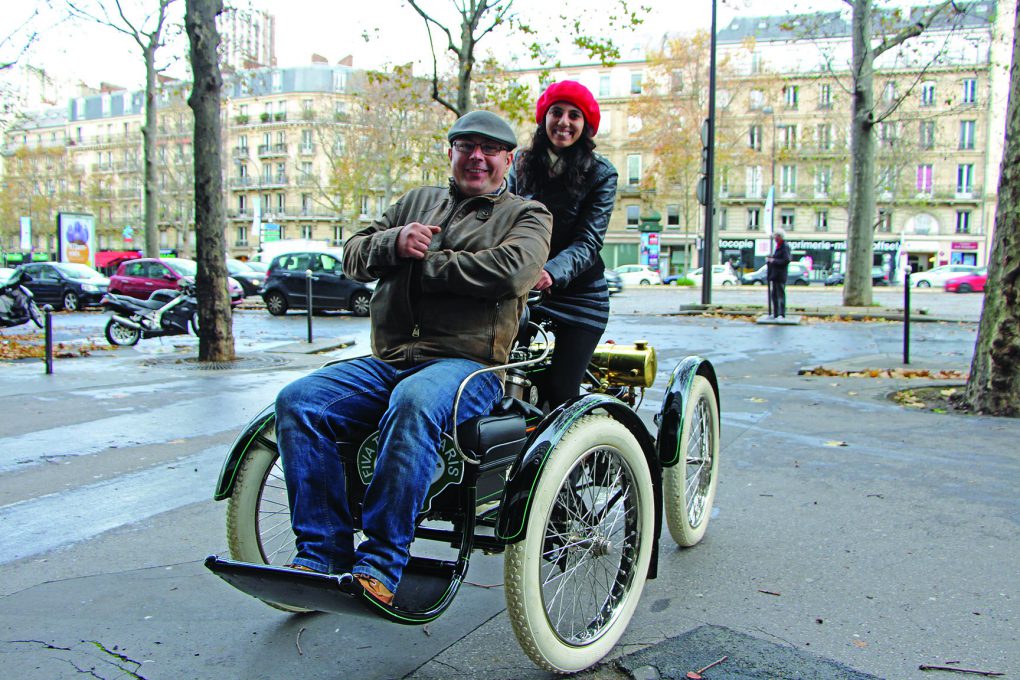
Was it the rain that had just amped up to a mad downpour? Was it the pitch dark? Was it the fact that our mode of transport was built when headlights weren’t? Or was it because we had somehow managed to reach these motorways with a zillion lanes and speeding cars? Yes, if you haven’t guessed it yet we were on the freeway, locally known as the ‘Périphérique’! Note to reader, things that you need to have while driving on a freeway; headlights, functional brakes, some neon reflective paint on your vehicle or yourself, and a car that’s preferably a minimum of a 100 years younger than the one we were driving in.
The positive thing about historic vehicle drivers is that we are used to unpredictable events popping up, and while we’re driving it’s only about us and our car or bike. So we never really know how bad the condition is until it has passed. To run you through my state of mind, I was concentrating on holding on, not quite processing the depth of the situation. All I remember was that the rain was pelting down and we had absolutely no protection from it. I looked to my right and there was a rather large river flowing deep down below, with a disproportionately low bridge built to protect us from falling off.
I couldn’t really turn to my left because the speed of the cars moving past constantly sent us swaying in every possible direction. Suddenly, while in the process of managing the steering and operating half a dozen levers, protecting my beret became top priority. Why, you ask? Because, at the perfect moment, I had a flashback to my childhood in which my grandmother told me the importance of keeping my head dry to avoid falling sick. I was just following her orders.
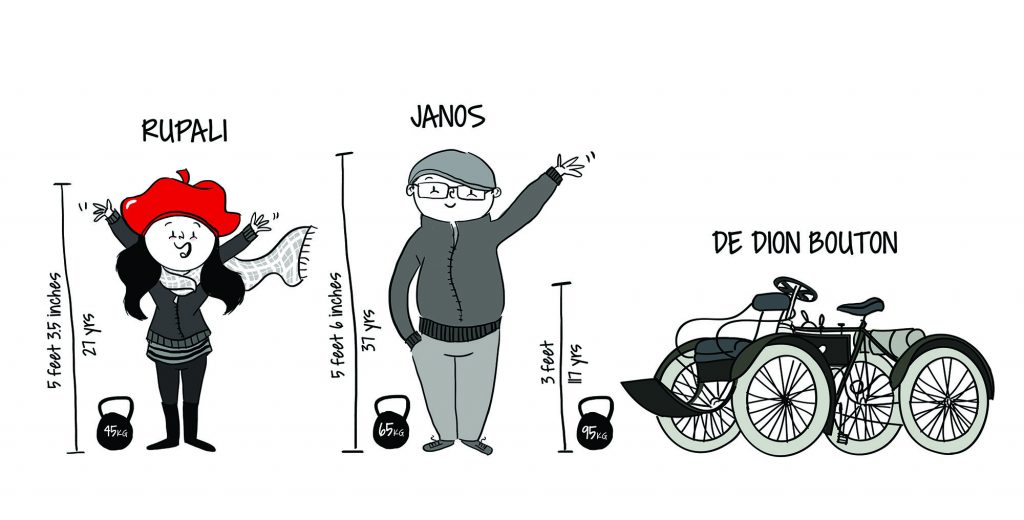
We finally reached a fork, that forced us to stop. I’m aware that stopping in the middle of the road is a bad idea, but that was the only choice we had. I tried to see if my phone would switch on while trying to ignore the traffic charging past on either side. Remember, we were practically invisible. Suddenly, as dramatic as it sounds, my phone switched on and started ringing. I answered the call and all I could hear was, ‘Wherever you are, keep coming straight down’, and then the call was disconnected. I looked up at Janos, looked back at the road, and at that instant I had a bad feeling in the pit of my stomach.
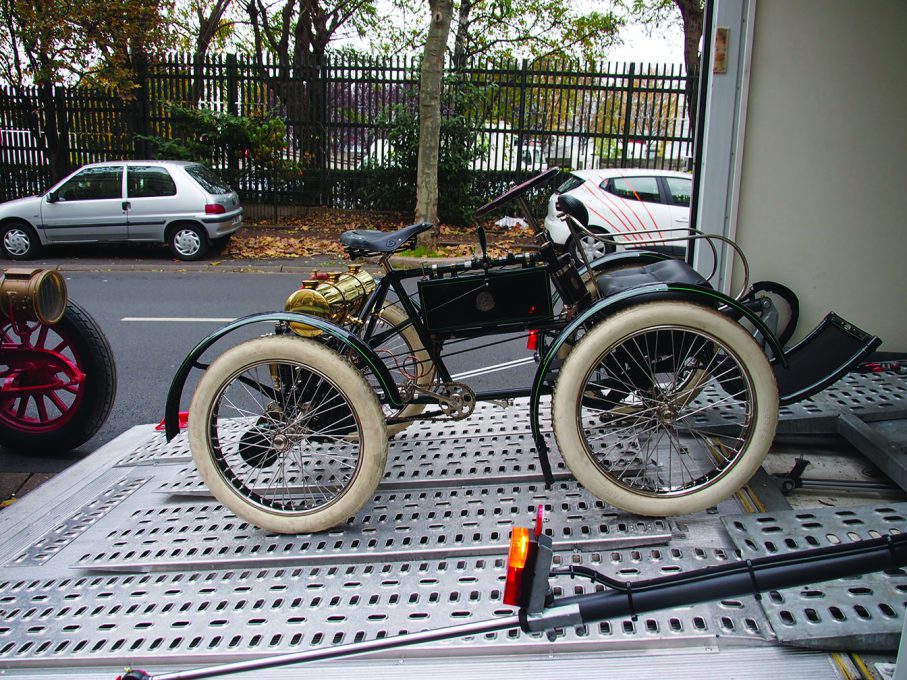
A few metres from us all the cars disappeared into a tunnel. For us to continue ‘straight’ meant that we would have to move a few metres diagonally and then straighten out and join the flow of traffic, while they were speeding into the tunnel. Trying to get Janos to push us and go through the whole drill of getting the De Dion in motion while trying to merge with the incredibly fast traffic meant there was a 0.0000000001 per cent chance of us making it through the tunnel without being hit. This was a great time to learn the difference between being gutsy and being plain foolish.
Luckily, that little voice of sense in my brain had transformed into a loud roar and said, ‘Get off the freeway right now at any cost!’ And so we did. We turned to the exit, pushed the quadricycle and got out of their as fast as we could. We were off the freeway, but we still didn’t know where we were and still weren’t safe from the traffic. We had to find some place to park the De Dion. After walking for quite a distance, we found an abandoned construction site in the middle of the street, we picked up this little baby and parked it right in the center under a tree. We then found a clean set of garbage bags under the seat, made holes in them and used them to protect us from getting soaked further. And we simply stood, took a few deep breaths, looked up and felt blessed to be alive.
My phone had no service, while Janos’s had a little charge left so he went around the corner to look for street signs and quickly messaged the organisers our location. I believe that there’s only one way to stay calm in a situation like this — lighten the mood. My first love is narrating stories, so I pulled out my phone, made Janos acquire a new skill as my cameraman, and began recapping our entire story and laughed our way through our misery. It was close to 9am and we were starving, so while I guarded the De Dion, Janos decided to look for a café. We then drove to the café, shot a few more videos, sipped some hot coffee, devoured the freshly baked croissants and chatted on. An hour later, they had found us!

A moment drenched in history, driving one of the first French gasoline-powered vehicles that was almost as old as the Eiffel Tower itself! I had finally reached my destination. And it made me realise yet again how historic vehicles, like heritage structures, have so many stories to tell. To me, they are history on wheels and have the ability to literally transport us back in time. Preserving and protecting these automobiles is so important as they are one of the few links left to eras that should never be forgotten.
And that was the story of my little Parisian adventure, on one of the most humbling and incredible automobiles ever made, the 1900 De Dion Bouton. I thanked this beautiful vehicle for being my companion and taking me on one of the most memorable adventures of my life. And then I bid her adieu as she set off to return home.
Story & Illustrations By Rupali Prakash





